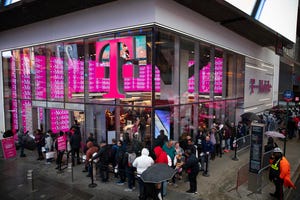Tunable Lasers: Poised for Takeoff?
A recent report says tunable lasers will comprise roughly 26 percent of all lasers manufactured worldwide by 2005
July 6, 2001

"Tunable" lasers, which can dynamically adjust among several different wavelengths of light (see Tunable Lasers), will emerge in force over the next couple of years, according to "Stay Tuned for Tunable Lasers," a report from The Yankee Group. Tunables will comprise roughly 26 percent of the $8.8 billion laser market by 2005, showing an estimated compound annual growth rate of 161 percent from now until then. The current laser market is growing at roughly 12 percent annually and will continue to do so for the next several years, according to Jay Patel, Yankee Group senior analyst and the report's author.
Tunables will comprise roughly 26 percent of the $8.8 billion laser market by 2005, showing an estimated compound annual growth rate of 161 percent from now until then. The current laser market is growing at roughly 12 percent annually and will continue to do so for the next several years, according to Jay Patel, Yankee Group senior analyst and the report's author.
The chief driver for the tunable laser market, Patel says, is telecommunications carriers' need for bandwidth control. Using tunable lasers, telecom equipment manufacturers can build systems that dynamically shift bandwidth increments and wavelengths used on an optical network. This enables carriers to support a range of subscriber bandwidth requirements, allowing them to make the most of the networks they already have in place, instead of having to add bandwidth and complexity to meet different customer needs.
Tunable lasers also eliminate costly manual adjustments to the network by allowing traffic to be rerouted to different wavelengths via software commands.
This market is just emerging and will account for roughly $50 million in worldwide product revenues this year, Patel says. Examples of current deployments can be seen in recently announced products from Atoga Systems and Nortel Networks Corp. (NYSE/Toronto: NT) (see Nortel Demos Tunable Laser, Bandwidth9 Scores a Coup, and Atoga Using Agility Laser).
Patel believes that tunable lasers will slowly replace those that emit fixed wavelengths. As this occurs, in the year 2002, optical switches, optical add/drop muxes, and other types of gear will start to sport dynamic provisioning.
The tunable gear is also expected to increase in speed. By 2003, they'll be capable of switching light in nanoseconds, instead of milliseconds as they do now. The faster tunable lasers will thus be usable in packet switching applications.
Clearly, this timetable is still an estimate, and everything depends on products being available in volume. That day has been postponed many times in the last few years. This time, say tunable laser vendors, it's for real.
- Mary Jander, Senior Editor, Light Reading
http://www.lightreading.com
You May Also Like










